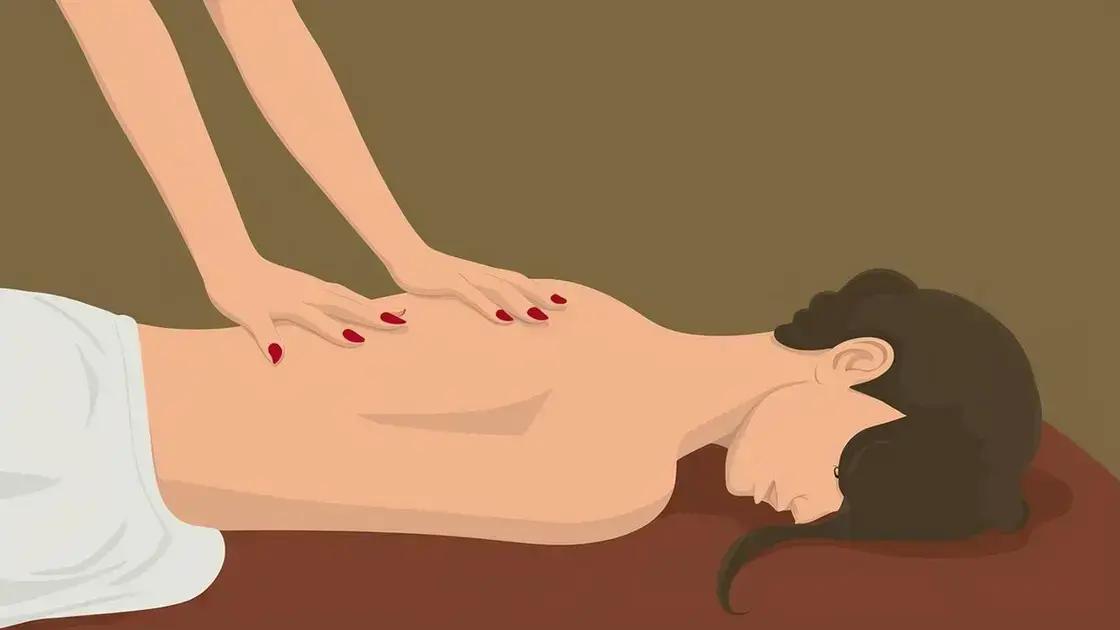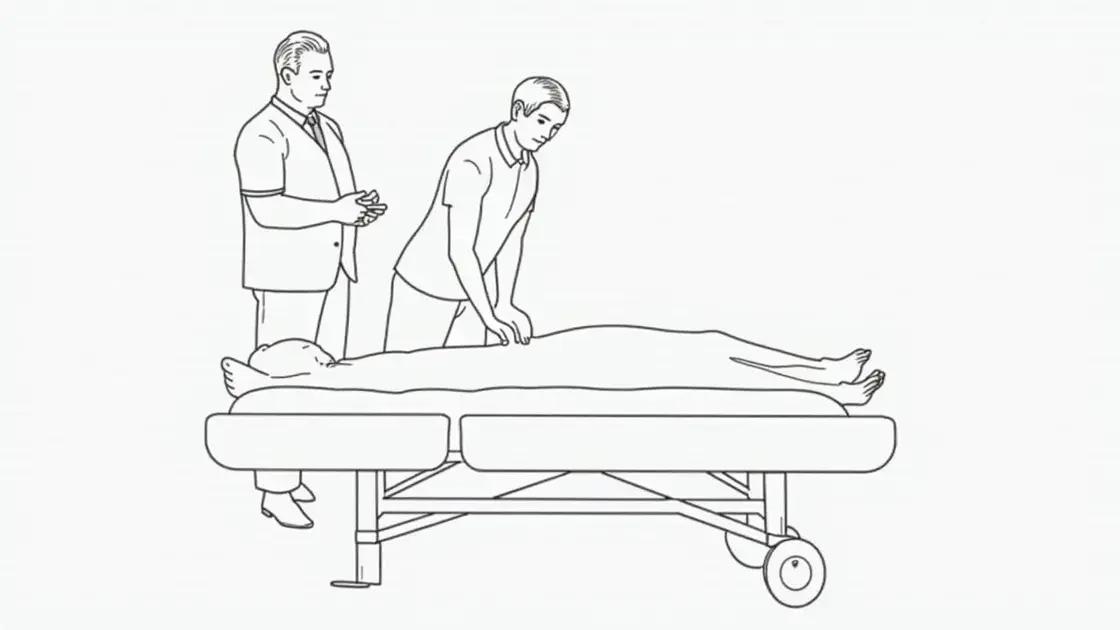Deep tissue massage is an effective technique for chronic pain relief that targets deep muscle layers to reduce tension, improve circulation, and promote relaxation. It’s beneficial for conditions like lower back pain and fibromyalgia, but precautions are essential for individuals with specific health issues. Communication with trained therapists and proper techniques are key for maximizing benefits safely.
Deep tissue massage is a powerful method for chronic pain relief that targets deeper layers of muscle and connective tissue. If you suffer from persistent discomfort, this massage technique can be a game changer. It alleviates muscle tension, enhances circulation, and promotes healing by focusing on the areas that often hold stress and pain. In this guide, we will dive into understanding deep tissue massage, explore its benefits for chronic pain, share effective techniques you can apply, and discuss precautions for safe practice.
Understanding Deep Tissue Massage

Deep tissue massage is a therapeutic technique that focuses on the deeper layers of muscle and connective tissue. It is particularly beneficial for chronic pain and muscle tension. By applying sustained pressure and using slow strokes, therapists can effectively tackle issues that often lead to discomfort.
What is Deep Tissue Massage?
Deep tissue massage targets the underlying muscles and fascia, which can become knotted and tense over time. This type of massage goes beyond relaxation, aiming to alleviate pain and restore movement. It often involves techniques such as stripping and friction, allowing the therapist to break down adhesions and improve circulation.
How It Works
The primary goal of deep tissue massage is to release tight muscles and improve blood flow. When pressure is applied, it can create a sense of discomfort, but this is generally seen as a sign that the massage is effective. As the knots are released, blood flow increases, providing oxygen and nutrients to the muscles, leading to healing and relief.
Who Can Benefit?
This massage technique is ideal for individuals with chronic pain, such as lower back pain, migraines, or sports injuries. It is also effective for those who frequently experience stress or muscle tension. If you’re recovering from surgery or dealing with chronic conditions, deep tissue massage can be an integral part of your recovery process.
Key Techniques Used
Some common techniques in deep tissue massage include:
Stripping: Deep pressure is applied along the length of muscles.
Cross-Fiber Friction: Short, deep strokes are used to break up adhesions and realign muscle fibers.
Trigger Point Therapy: Focuses on specific points to relieve pain referred from different areas of the body.
By understanding these techniques, you can better appreciate how deep tissue massage can aid in preventing and healing chronic pain.
Benefits for Chronic Pain Relief

Deep tissue massage offers numerous benefits for those dealing with chronic pain. This therapeutic technique helps to relieve tension and reduce pain by focusing on deeper layers of muscle and connective tissue.
Reduces Muscle Tension
One of the primary benefits of deep tissue massage is its ability to reduce muscle tension. By applying firm pressure, therapists can release knots and tightness in the muscles, allowing for greater flexibility and ease of movement.
Improves Blood Circulation
Enhancing blood circulation is another significant advantage. Improved blood flow helps deliver oxygen and nutrients to the muscles, promoting healing and reducing inflammation. This is particularly important for people with chronic pain conditions.
Alleviates Pain
Deep tissue massage specifically targets areas of chronic pain, providing relief for conditions such as fibromyalgia, arthritis, and lower back pain. By reducing tension in the muscles, it can also lessen the discomfort associated with these ailments.
Promotes Relaxation
In addition to physical benefits, deep tissue massage promotes relaxation by reducing stress hormones in the body. This emotional relief can significantly impact chronic pain, as stress often exacerbates discomfort.
Enhances Range of Motion
Finally, this type of massage can enhance range of motion. As muscle tension decreases, joints can move more freely, allowing individuals to participate in daily activities with greater ease. This improvement supports overall well-being and quality of life.
Techniques for Effective Use

Using deep tissue massage effectively requires specific techniques that can enhance its benefits. Here are some key methods that can be applied during a session.
1. Start Slow
When administering deep tissue massage, it’s essential to start slowly. Gradually increase the pressure to allow the recipient to adjust to the intensity. This helps in relaxing tight muscles and prevents discomfort during the process.
2. Use Long, Steady Strokes
Applying long, steady strokes helps in reaching deeper muscle layers. The therapist can use their forearms, elbows, and fingers to maintain consistent pressure while moving along the muscle fibers. This technique encourages blood flow and eases tension effectively.
3. Focus on Trigger Points
Focusing on trigger points is crucial. These are specific areas of muscle that are sensitive to pressure. Applying direct, sustained pressure on these points can help release tension and alleviate pain in related areas.
4. Incorporate Stretching Techniques
Incorporating stretching into a deep tissue massage increases flexibility and enhances relief. Gentle stretches can be applied before, during, or after the massage, allowing muscles to loosen and improve mobility.
5. Communicate with the Recipient
Communication is vital during the massage. The recipient should feel comfortable expressing their level of pain and comfort. This feedback allows the therapist to adjust their techniques and pressure levels accordingly, ensuring an effective session.
6. Follow Up with Hydration
After the session, encourage the recipient to hydrate. Drinking water helps flush out toxins that may have been released during the massage and aids in recovery.
Precautions and When to Avoid

While deep tissue massage can be beneficial, there are important precautions to consider for safety and effectiveness. It’s crucial to know when to avoid this type of massage.
When to Avoid Deep Tissue Massage
Do not undergo deep tissue massage if you have certain medical conditions. These include:
1. Open Wounds or Injuries: If you have any cuts, bruises, or fresh injuries, it’s best to avoid massage to allow proper healing.
2. Severe Osteoporosis: Individuals with severe osteoporosis may have fragile bones, making deep tissue techniques unsafe.
3. Recent Surgery: Post-surgery patients should consult their doctor before getting any massage to ensure it won’t interfere with recovery.
Health Conditions to Note
Inform your therapist if you have a history of:
1. Heart Problems: Cardiovascular issues can be aggravated by intense massage.
2. Blood Clots: Massaging over a clot can dislodge it, which may lead to serious complications.
3. Infections: Infections or skin diseases can be spread through massage. Avoid it until fully healed.
Consultation is Key
Always consult with a healthcare provider before starting deep tissue massage, especially if you have any chronic illnesses. Discuss your symptoms and get advice tailored to your condition. This ensures that massage therapy will be safe and appropriate.
Trust Your Body
It’s also essential to listen to your body. If you experience pain during the massage, communicate with your therapist immediately. They can adjust techniques or pressure to make the experience more comfortable.
Wrapping Up the Benefits of Deep Tissue Massage
Deep tissue massage is a powerful technique that can provide significant relief for chronic pain. By understanding the effective methods, benefits, and necessary precautions, individuals can make informed decisions about incorporating this therapy into their wellness routine.
This massage not only alleviates discomfort but also promotes relaxation, improves circulation, and enhances overall well-being. However, it is vital to consult with healthcare professionals, especially for those with specific health conditions.
Ultimately, with the right approach and care, deep tissue massage can be a valuable tool for healing and pain management in daily life.
FAQ – Frequently Asked Questions about Deep Tissue Massage for Chronic Pain Relief
What is deep tissue massage?
Deep tissue massage is a therapeutic technique that focuses on the deeper layers of muscle and connective tissue to relieve chronic pain and tension.
How can deep tissue massage help with chronic pain?
It reduces muscle tension, improves blood circulation, alleviates pain, and promotes relaxation, all of which are beneficial for chronic pain relief.
What techniques are used during deep tissue massage?
Common techniques include long, steady strokes, trigger point therapy, and stretching methods targeted at releasing muscle tightness.
Are there any precautions I should consider?
Yes, avoid deep tissue massage if you have open wounds, severe osteoporosis, heart problems, blood clots, or infections. Always consult with a healthcare provider.
How often should I get a deep tissue massage?
The frequency can vary based on individual needs, but many people find that once a week or every few weeks provides the best results for chronic pain.
Is deep tissue massage safe for everyone?
While it benefits many, it is not suitable for everyone, especially those with certain health conditions. A consultation with a doctor is recommended before starting.












